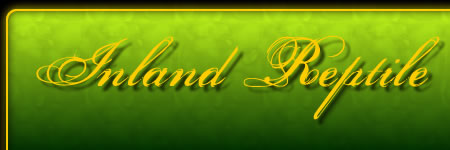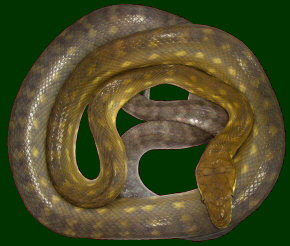
![]()
Description
 This is a smaller python, with adults averaging 4-6ft but with a more gracile build than most python taxa. Morelia nauta is part of the closely related amethystina complex. This group of species had been previously presumed to be a single taxon (Morelia amethystina). Morelia nauta is the smallest of this group and is among the most divergent.
This is a smaller python, with adults averaging 4-6ft but with a more gracile build than most python taxa. Morelia nauta is part of the closely related amethystina complex. This group of species had been previously presumed to be a single taxon (Morelia amethystina). Morelia nauta is the smallest of this group and is among the most divergent.
The build of these pythons is slightly laterally compressed, a characteristic shared by most arboreal species. The tail is prehensile, a shared characteristic of all Morelia. When compared to other members of the amethystina complex M nauta has a more slender head and an elongated snout. These features give the head a more pointed appearance.
Tannimbar pythons have four naturally occurring color phases: patterned xanthic, patternless xanthic, patterned axanthic and patternless axanthic. The patternless and axanthic traits were proven to each be simple recessive in their mode of inheritance through early breeding trials, including those conduted here. The most common of the four phenotypes encountered is the patternless axanthic. This form outnumbers all others by a wide margin. The rarest of these four appearances is the patterned xanthic form. This is a highly unusual situation, one in which the most common wild form is a double recessive  mutation, and the rarest form is what would be considered genetically normal. This would be akin to the dominant form of wild cornsnake being a snow. It seems very likely that something is driving this species' rapid evolutionary change. The primary suspect would be deforestation. Patterned xanthic animals would be well hidden when living in these islands ancestral forest and though it is speculative it seems likely that the pervasiveness of these two recessive mutations is in response to the loss of much of the regions forest. These two mutations are so common that to this date all wild specimens that have been bred in captivity have proven to be either heterozygous or homozygous for both.
mutation, and the rarest form is what would be considered genetically normal. This would be akin to the dominant form of wild cornsnake being a snow. It seems very likely that something is driving this species' rapid evolutionary change. The primary suspect would be deforestation. Patterned xanthic animals would be well hidden when living in these islands ancestral forest and though it is speculative it seems likely that the pervasiveness of these two recessive mutations is in response to the loss of much of the regions forest. These two mutations are so common that to this date all wild specimens that have been bred in captivity have proven to be either heterozygous or homozygous for both.
Habitat
_thm.jpg) Little is known of the behavior and ecology of wild Tannimbar pythons and little field research has been done. Much of what is known comes from the observation of captive specimens. The Tannimbar archipelago historically has been primarily rainforest and its reasonable to speculate that this is the natural habitat for this species. This region however has seen rampant deforestation in the last century and much of the forest has been cleared, particularly on the main island of Yamdena. The loss of most of Yamdenas’ forest would almost certainly have a deleterious effect on the native fauna. Morelia nauta is an extremely arboreal species, exceeded only by Morelia viridis in this regard. The precise distribution of this taxon throughout its current and former range is largely unknown.
Little is known of the behavior and ecology of wild Tannimbar pythons and little field research has been done. Much of what is known comes from the observation of captive specimens. The Tannimbar archipelago historically has been primarily rainforest and its reasonable to speculate that this is the natural habitat for this species. This region however has seen rampant deforestation in the last century and much of the forest has been cleared, particularly on the main island of Yamdena. The loss of most of Yamdenas’ forest would almost certainly have a deleterious effect on the native fauna. Morelia nauta is an extremely arboreal species, exceeded only by Morelia viridis in this regard. The precise distribution of this taxon throughout its current and former range is largely unknown.
Distribution
 Tannimbar pythons as their name implies are endemic to the Tannimbar archipelago. This cluster of islands is located southwest of New Guinea and is comprised of the large main island of Yamdena and a myriad of smaller adjacent islands. The geographic position of these islands is paramount in understanding this species. The Tannimbar archipelago is located just off of the now submerged Sahul Shelf. The Sahul region was dry land during the repeated glaciations of the Pleistocene (2.588 million to 12,000 years BP) when sea levels were a much as 300ft lower than the present level. During these repeated glacial epochs the landmasses of Australia, New Guinea and the Aru Islands formed a single large landmass. The Tannimbar region is surrounded by deep water and as such was never part of the greater Australian/New Guinea continental landmass.
Tannimbar pythons as their name implies are endemic to the Tannimbar archipelago. This cluster of islands is located southwest of New Guinea and is comprised of the large main island of Yamdena and a myriad of smaller adjacent islands. The geographic position of these islands is paramount in understanding this species. The Tannimbar archipelago is located just off of the now submerged Sahul Shelf. The Sahul region was dry land during the repeated glaciations of the Pleistocene (2.588 million to 12,000 years BP) when sea levels were a much as 300ft lower than the present level. During these repeated glacial epochs the landmasses of Australia, New Guinea and the Aru Islands formed a single large landmass. The Tannimbar region is surrounded by deep water and as such was never part of the greater Australian/New Guinea continental landmass.
The significance of this is that the Tannimbar island group has always been geographically isolated. As a result of this isolation the only way for new species to arrive is through rafting. The taxonomic designation of this species, nauta is the Latin word for “sailor” and is also the root of the English word nautical, references to this species arrival in Tannimbar via the sea.
Projects
I am currently working with a single pair of this rare species. The female is a LTC patternless axanthic animal. The male is an F2 patterned xanthic.
